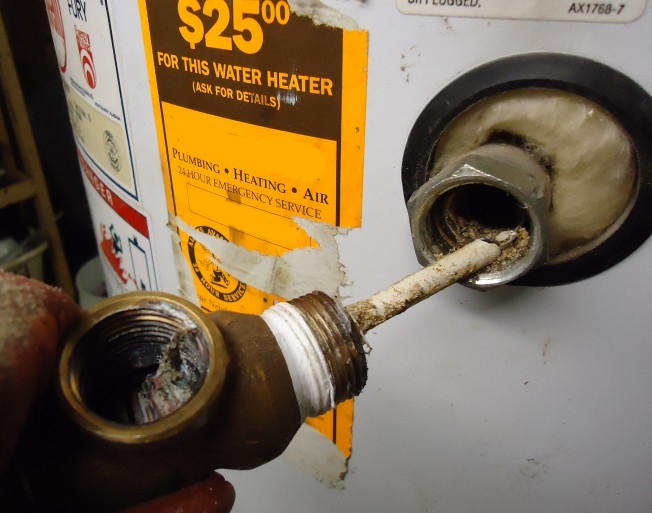Steps on How to Care for Your Home's Hot Water System Effectively
Steps on How to Care for Your Home's Hot Water System Effectively
Blog Article
Were you interested in guidance around How to Maintain a Hot Water Heater in a Few Simple Steps?

Warm water is important for day-to-day comfort, whether it's for a revitalizing shower or washing meals. To guarantee your hot water system runs effectively and lasts much longer, regular maintenance is essential. This post provides useful pointers and insights on how to preserve your home's warm water system to prevent disturbances and costly repair work.
Intro
Keeping your home's hot water system might seem challenging, yet with a couple of simple steps, you can ensure it runs efficiently for several years ahead. This overview covers every little thing from understanding your hot water system to DIY upkeep ideas and recognizing when to employ specialist help.
Significance of Preserving Your Hot Water System
Routine upkeep not just expands the life expectancy of your warm water system however additionally guarantees it runs successfully. Neglecting maintenance can bring about lowered performance, greater power bills, and even premature failure of the system.
Indicators Your Hot Water System Needs Upkeep
Understanding when your hot water system needs interest can avoid major problems. Watch out for indications such as inconsistent water temperature, strange noises from the heater, or rusty water.
Flushing the Hot Water Heater
Purging your hot water heater gets rid of sediment build-up, boosting performance and lengthening its life.
Monitoring and Changing Anode Rods
Anode rods avoid deterioration inside the storage tank. Checking and changing them when worn is important.
Complicated Issues Requiring Expert Help
Instances consist of significant leaks, electrical troubles, or if your hot water heater is continually underperforming.
Regular Expert Maintenance Benefits
Specialist maintenance can include comprehensive assessments, tune-ups, and guaranteeing compliance with safety and security requirements.
Examining and Adjusting Temperature Level Settings
Changing the temperature setups guarantees optimal efficiency and security.
Do It Yourself Tips for Upkeep
You can do several upkeep tasks on your own to maintain your hot water system in leading condition.
Checking for Leakages
Frequently inspect pipelines and connections for leakages, as these can result in water damages and higher bills.
Understanding Your Hot Water System
Prior to diving right into upkeep jobs, it's useful to recognize the fundamental components of your warm water system. Typically, this consists of the water heater itself, pipelines, anode poles, and temperature level controls.
Monthly Upkeep Tasks
Regular regular monthly checks can help catch small issues prior to they intensify.
Examining Pressure Alleviation Valves
Testing the pressure safety valve ensures it operates correctly and stops excessive pressure build-up.
Insulating Pipes
Shielding warm water pipes minimizes heat loss and can conserve energy.
When to Call an Expert
While do it yourself upkeep is valuable, some issues call for specialist knowledge.
Verdict
Regular maintenance of your home's hot water system is vital for efficiency, durability, and expense savings. By complying with these ideas and recognizing when to seek expert assistance, you can make certain a reputable supply of warm water without unanticipated disturbances.
How to Maintain an Instant Hot Water Heater
Before tinkering with your hot water heater, make sure that it’s not powered on. You also have to turn off the main circuit breaker and shut off the main gas line to prevent accidents. Also turn off the water valves connected to your unit to prevent water from flowing into and out of the appliance. 2. When you’re done, you have to detach the purge valves’ caps. These look like the letter “T†and are situated on either side of the water valves. Doing so will release any pressure that has accumulated inside the valves while at the same time avoid hot water from shooting out and burning your skin. 3. When the purge valves’ caps are removed, you have to connect your hosing lines to the valves. Your unit should have come with three hoses but if it didn’t, you can purchase these things from any hardware or home repair shops. You can also get them from retail stores that sell water heating systems. Read the user’s manual and follow it to complete this task properly. When the hosing lines are connected, open the purge port’s valves. 4. You should never use harsh chemical cleaners or solutions when cleaning your unit. Make use of white vinegar instead. It should be undiluted and you’ll probably use about 2 gallons. 5. Now flush your water heater. This task should probably take about 40 minutes. We can’t give you specific directions for this because the procedure is carried out depending on the type, model and brand of your heater. With that being said, refer to the user’s manual. 6. When you’re done draining the unit, you have to turn off the purge port valves again. Remove the hosing lines that you earlier installed on each of the water valves. Put the valve caps (purge port) back in their respective places and be very careful so as not to damage the rubber discs that are found inside these caps. 7. Now that everything’s back in place, check your user’s manual again to find out how to reactivate your water heating system. 8. Once it is working, turn one of your hot water faucets on just to let air pass through the heater’s water supply pipes. Leave the tap on until water flows smoothly out of it. https://www.orrplumbing.com/blog/2014/september/how-to-maintain-an-instant-hot-water-heater/

As a serious person who reads about Tips For Maintaining Your Hot Water Heater, I figured sharing that piece of content was really useful. If you please set aside a second to promote this blog if you enjoyed reading it. Thank-you for going through it.
This Post Report this page